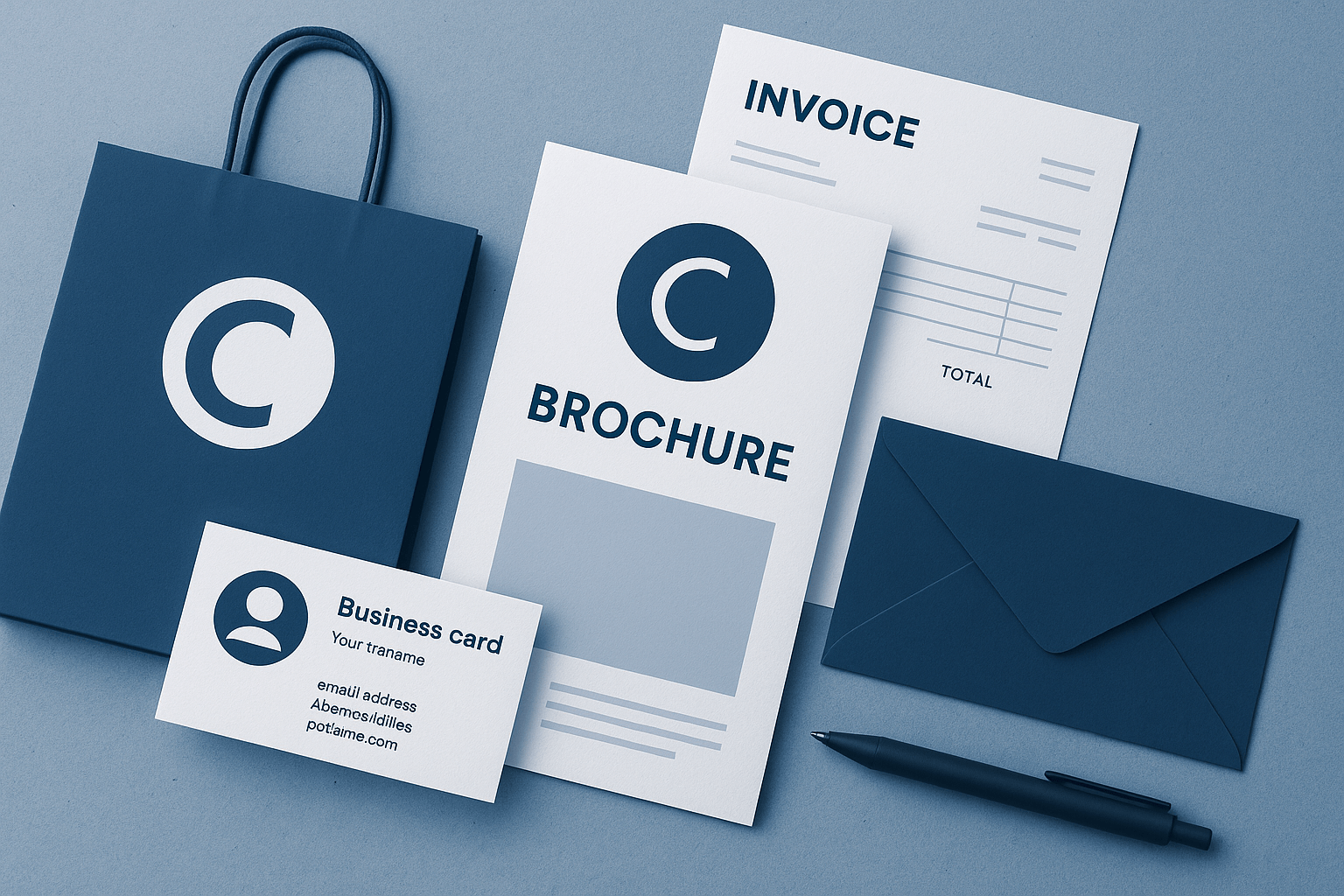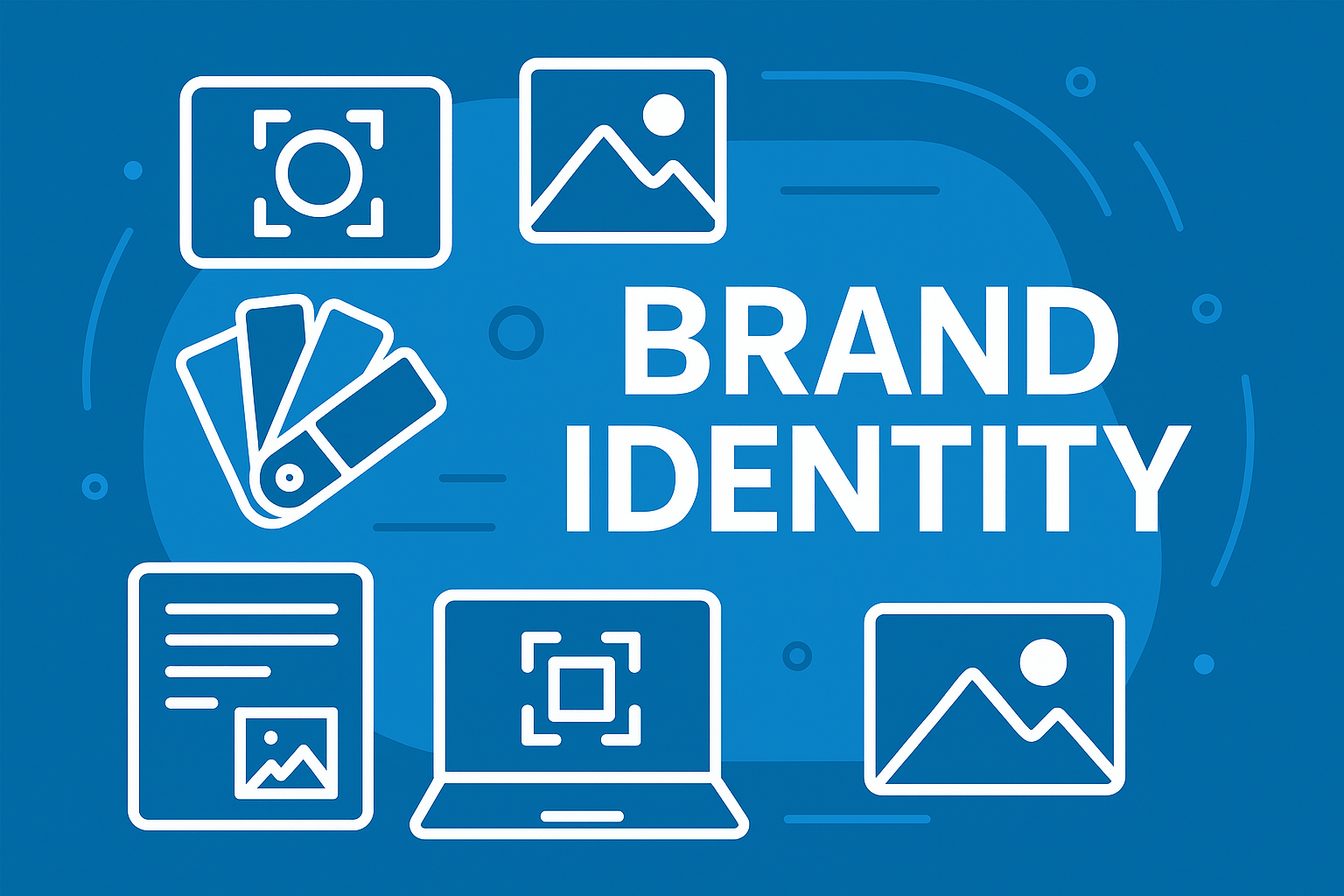Print Design: How to Present Your Brand Identity in a Tangible and Attractive Way
In a digital world that expands more each day, where most interactions between businesses and customers are shifting to screens, some may assume that printed materials have lost their value or become outdated. But the truth is far from that. Paper still tells a completely different story—one built on emotion, tangibility, and personal connection.
Printed materials are the only medium that allow a brand to be touched, seen, and interacted with in a real, physical way—away from glowing ads and digital effects. They are what transform your visual identity from a screen-based concept into a full sensory experience that embeds itself into the customer’s memory.
Designing printed materials isn’t just a cosmetic step to complete the picture. It’s a direct extension and an inseparable part of your brand identity strategy. From the business card you hand out in a meeting or event—carrying your name, logo, and brand tone in a small but impactful form—to the brochure that explains your services, or the branded shopping bag that a customer walks down the street with, each printed item speaks on your behalf and continues your brand message silently, but powerfully.
Printed materials make your brand feel closer, more authentic, and more solid. They build trust between you and your audience, and prove that your brand cares about the finest details. And in a competitive market flooded with stores and companies, details are what make the difference.
In this article, we’ll explore the core types of printed materials that no business or store should be without. We’ll walk through the foundations of professional print design that guarantee strong and attractive results, and highlight the most common mistakes to avoid—so you can ensure that your printed materials truly reflect the strength and consistency of your brand identity.
What Are Commercial Prints and Why Are They Essential?
Commercial prints are any printed items that a business uses to communicate with its audience, present its services, or support its operations. These materials range from business cards and brochures to packaging labels, invoices, branded envelopes, and official letterheads. Each of these elements plays a strategic role in building a consistent and professional image of the brand in the minds of customers and partners.
In the digital age, many assume that everything can be done online—but the impact of holding something tangible in your hands remains unmatched. A well-designed printed item reinforces your brand’s credibility, creates a lasting impression, and often serves as a conversation starter or decision influencer. It adds a layer of legitimacy and elegance that purely digital interactions sometimes lack.
Simply put, commercial prints are not optional—they’re a powerful tool for visibility, identity, and connection. Whether you're launching a new product, attending an event, or running daily operations, having cohesive and thoughtfully designed printed materials can set your business apart and elevate your brand presence.
Essential Types of Printed Materials for Stores and Businesses
Printed materials come in many forms, and each type serves a specific purpose in building your brand identity and enhancing customer experience. Below are some of the most important types every business should consider:
Business Cards
Business cards are more than just contact details—they're miniature ambassadors of your brand. A well-designed card communicates professionalism, leaves a lasting impression, and makes networking more impactful. It should reflect your brand's tone through the right logo, colors, and typography.
Brochures and Booklets
These are ideal for explaining your services, product lines, or brand story in more detail. Whether handed out at events or placed inside orders, brochures offer informative value and present your business as structured and reliable.
Printed Invoices and Receipts
Even transactional documents can reinforce your branding. A clear, visually branded invoice shows organization and care, and it reassures your customer that they’re dealing with a professional, trustworthy business.
Packaging Bags and Product Labels
Packaging is one of the most visible print materials a customer interacts with. A beautifully branded bag or a well-designed product label doesn’t just carry your item—it carries your identity. This is especially important for retail and e-commerce brands looking to leave a memorable impression.
Envelopes, Letterheads, and Presentation Folders
These elements are essential in formal communication and business proposals. They showcase attention to detail and enhance your brand image, especially when dealing with corporate clients or institutional partners.
Fundamentals of Professional Print Design
Designing printed materials isn’t just about creating something visually attractive—it’s about producing assets that reflect your brand identity clearly, function well in real-world use, and leave a strong impression. Here are the most important foundations you need to focus on:
Clear Visual Identity
Every printed item should be a natural extension of your brand’s visual language. That means consistent use of your logo, color palette, typography, and imagery style. This visual harmony reinforces recognition and builds trust over time.
Correct Print Dimensions
Each type of print material has industry-standard sizes. Using the correct dimensions ensures your design looks professional, fits in with other marketing assets, and is cost-effective in production. Oversized or undersized materials can look awkward and waste resources.
Print-Ready File Preparation
Digital designs aren’t ready for print unless they’re set up properly. This includes using CMYK color mode, setting a proper bleed area, choosing high-resolution images (300 DPI or higher), and exporting files in the right format (usually PDF). Ignoring these steps can lead to poor-quality printing or errors during production.
Clean Visual Hierarchy
Effective print design relies on guiding the viewer’s eye across the layout. That means organizing elements based on importance, using whitespace smartly, and ensuring that key messages—like your call to action or contact info—stand out clearly. Simplicity often leads to more impact.
When these fundamentals are applied properly, your printed materials become much more than a medium—they become an active agent in storytelling, connection, and conversion.
Common Mistakes in Print Design
Even with the best intentions, many businesses fall into avoidable traps when designing printed materials. These mistakes can dilute your message, harm your brand’s image, or even lead to additional costs. Here's what to watch out for:
Using Fonts That Are Too Small or Hard to Read
Text that's too tiny or overly decorative can frustrate readers and make your materials look unprofessional. Your typography should be legible at arm’s length, especially for business cards, brochures, and packaging.
Overcrowding the Design with Text and Images
Trying to include too much in one piece can backfire. It overwhelms the viewer and reduces the effectiveness of your key messages. Whitespace is your friend—use it to give breathing room and focus attention.
Lack of a Clear Call to Action
A printed material without a clear next step (like “Visit our store,” “Follow us,” or “Scan this QR code”) misses an opportunity. A strong CTA turns a passive reader into an active customer.
Inconsistent or Eye-Straining Colors
Using colors that clash with your brand or hurt readability can create a negative impression. Stick to your brand color palette and ensure good contrast between text and background.
Images That Don’t Match the Message or Category
Random or low-quality visuals confuse the audience and cheapen your print material. Always choose high-resolution images that reflect your product, audience, and tone.
Avoiding these mistakes ensures that your prints not only look good but also function effectively—enhancing your credibility and converting attention into action.
In today’s competitive e-commerce landscape, print design remains a powerful ally in building trust, enhancing brand recognition, and creating a lasting impression beyond the digital screen. While online marketing dominates in speed and reach, printed materials speak to your audience in a different language—a language of presence, tangibility, and credibility.
From banners and brochures to packaging and product labels, every piece you design and print has the power to tell your story, reflect your values, and influence buying decisions. When crafted with care and aligned with your visual identity, these materials become not just supportive assets—but core pillars of your brand experience.
So, don’t underestimate the impact of paper in a digital world. Use every printed banner, card, or label as a chance to connect meaningfully, promote your offers boldly, and reinforce your brand’s image with elegance and professionalism.
With the right print strategy in place, your store will not only grab attention—it will stay in memory.

